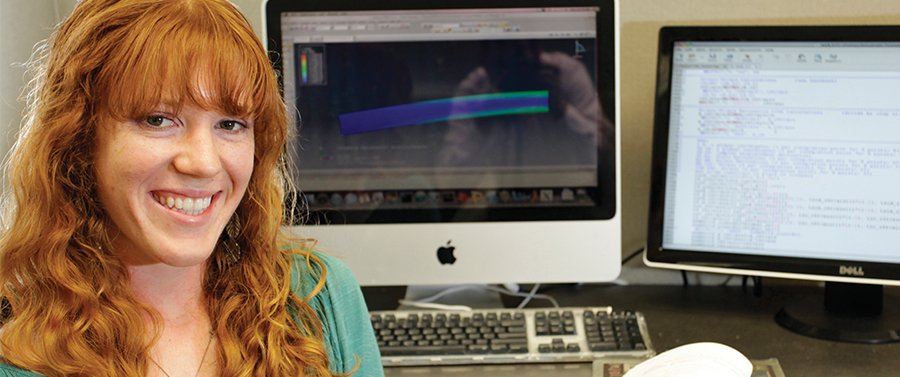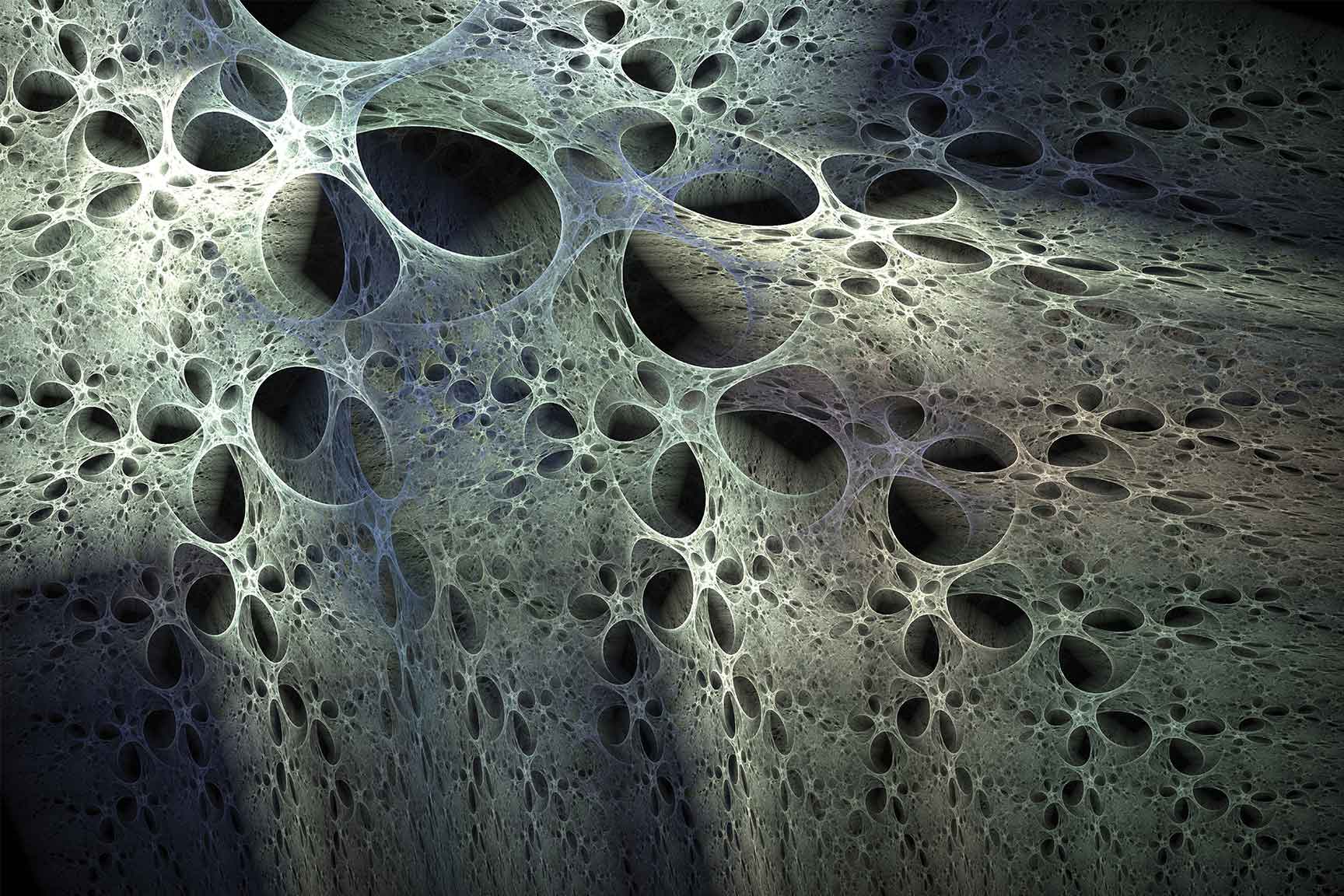


Kayla Lovelady isn’t about to put herself in a box. But if she were, it would be a really good box. She would most likely design it with the same Abaqus software she’s using to research the finite element formulation and analysis of anisotropic materials, and derive and implement the linear elastic finite element methods with an anisotropic constitutive matrix.
Why would she use such complicated methods to design a box? Because she can, and because of the training she is receiving under the guidance of Dr. (Harry) Millwater, Department Chair of Mechanical Engineering.
”I work with finite element analysis and am expanding the research on the complex variable Taylor series (CTSE) method, that Dr. Millwater and his lab developed. Essentially, I am testing the stresses, strains, and various sensitivities of certain models, such as cantilever steel beams, by programming a user element implementing the CTSE method to see if it will give more precise measurements in regards to stresses and failures,” Lovelady said.
But the research Lovelady is doing is only one of her interests. As she prepares for graduation in December, she’s considering a stint in the Navy to explore its nuclear program before going on to graduate school.
”My grandparents were in the military and my father was a police officer for 30 years and they instilled in me, this desire to serve,” explained Lovelady. ”The Navy has one of the best nuclear programs in the country and being part of that appeals to me. I would be able to use my degree for a greater good.”
The 22-year-old San Antonio native is carrying on another family tradition as well. She’ll join her father and sister as UTSA graduates when she receives her bachelor’s degree in mechanical engineering. But tradition was only part of Lovelady’s decision to come to her hometown university.
”UTSA is a big campus but it has a ‘small school’ feel. And since the engineering program is smaller than some other schools, undergraduates have a lot more opportunities to get involved in research, and that was something I was very interested in.”
Prior to working with Millwater, Lovelady got her first taste of undergraduate research in the biomedical engineering department. ”I was an undergraduate research assistant in the cell and tissue engineering lab,” she said. ”I was paired up with a Ph.D. and a master’s student and began doing basic lab work.”
The research involved testing the stability and structure of 3-D matrixes containing live cells. ”I was doing actual cell culture work,” Lovelady said. She and her partners tested the stability and structure of the matrixes to see what kind of pressures they could withstand and how the cells would react with the applied pressures.
”Then we took 3-D micrograph pictures, which generate images from multiple slices of the matrix. We tested the viscous properties of the collagen by applying different stresses at different rates. There were potential applications in wound care and cell growth.” And even though the biomedical work was fascinating, Lovelady was looking for opportunities in mechanical engineering.
”After a year in that laboratory I decided to explore my options. That’s when I met Dr. Millwater.”
Millwater’s description of the work his students were doing, particularly in finite element analysis and structure mechanics, was enough to hook Lovelady.
”It’s awesome that I’ve been able to work in labs in two different engineering disciplines. UTSA allowed me to work in two completely different lab settings and to explore what I want to do with my future. Other schools just don’t give undergraduates those kinds of opportunities.
”I would have never been able to do something like this if I went to a school where I was confined to a classroom. I’m able to work with graduate students and professors and see what they do and how they’re involved in engineering. Undergraduate research expands your knowledge and skill set. It’s important to apply the skills you learn in the classroom to real-life situations.”
Lovelady, like other researchers, found her opportunities through flyers and professors actively recruiting undergraduates.
”The research being done here isn’t solely the realm of Ph.D. and master’s students. Undergrad research students are being paid for their work through monthly stipends, about the equivalent of a part–time job.”
When things get too tense in the lab, she runs away from her problems–literally.
”I’m currently training for a half-marathon.” Lovelady explained. ”I want to strike a balance in my life. If I am going to work on complex equations that exercise me mentally, then I want to do something that is physically challenging as well. So, I jumped at the chance to run in a half marathon.”
The only downside about her research work and training, said Lovelady, is having less time for other interests such as music.
”I originally wanted to go into music. It was a difficult choice. Music is a great hobby, and I still play now and then, but I wanted to do something different with my life so I chose engineering. Both require a tremendous commitment. You have to be willing to spend most of your time practicing and studying if you want to succeed. You really have to love what you’re doing or you won’t make it.”
The redhead rankles at the idea music would be a more ”traditional” career for a woman.
”I’ve never given much thought to the idea I’m a ‘female engineer.’ I just see myself as an engineer. There’s really no difference between me and a male engineer. There’s no reason that stereotype should persist. I have always had a strength and interest in math and science. It’s always been something I’ve excelled in. There’s nothing gender-related about that.”
—Randy Lankford